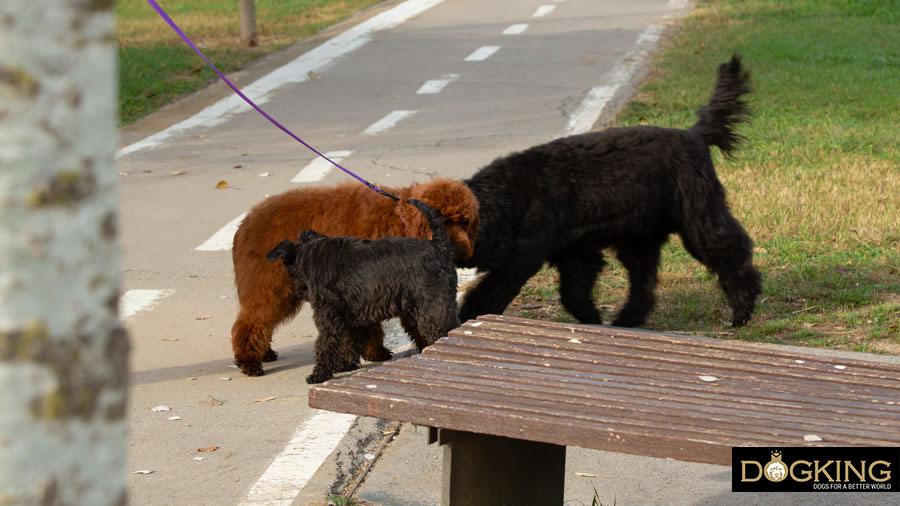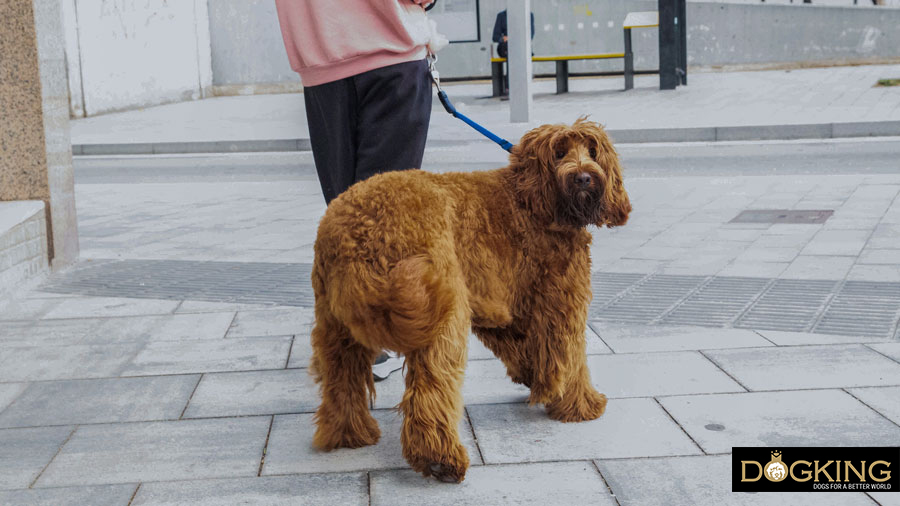Why do dogs sniff each other's rear ends when they meet?
It is a natural behaviour that allows them to recognise each other, socialise and share information through smell.

THE CURIOUS RITUAL OF DOGS
Approximate reading time: 6 minutes
People have a lot to learn about canine behaviour. One attitude of our faithful friends that always makes us curious is the way they greet each other. Did you know that when two dogs meet and sniff each other's butts, they are introducing themselves to each other? We should never correct or scold our pets for this behaviour, as for them it is a natural and necessary social interaction in which they exchange all kinds of information.

Table of contents
1. Why do dogs sniff each other's butts when they meet?
3. Why you should let your dog sniff other dogs' buttocks
4. Why my dog won't let other dogs sniff their bottom
1. Why do dogs sniff each other's bottoms when they meet?

You're probably used to the fact that when you go out for a walk with your pet, they usually stop to greet the odd dog that crosses their path. And before you know it, they're sniffing each other's bottoms, walking in circles to catch up with each other. But do you know why dogs behave this way?
We humans may find this moment very strange and even a little gross. We may even think that our dog is a “pig” for sniffing another dog's rear end. However, what these animals do when they sniff each other is the same as what we do when we shake hands, greet each other and ask how we are doing.
Dogs have this curious way of introducing themselves for a reason: the secretions from their anal sacs – two glands located on either side of the anus – are rich in fatty acids and trimethylamine. These components vary depending on the animal’s condition and carry chemical messages full of valuable information that their highly developed sense of smell can easily detect.
When a dog smells another dog in this area, it can detect what kind of food it eats, its gender, whether it is ill and other information about its genetics. Remember that a dog's sense of smell can be up to 100,000 times more developed than that of humans.
2. The dog handshake – a ritual

For humans, greetings are usually informal and spontaneous, but dogs take their time when introducing themselves. The greeting between dogs is a real ritual, and sniffing each other's backsides is part of it. There are also other behaviours you can notice when your dog meets another dog. Here’s a step-by-step explanation of how this greeting works.
- First of all, dogs make eye contact with each other, although they may have already detected one another by scent.
- As they approach slowly, they stand side by side for a few moments and start to turn to reach each other's hindquarters, beginning the official introduction. This can last from a few seconds to several minutes.
- Dogs may also sniff each other's bodies or muzzles, as they can gather additional information from these areas.
- Once the introduction is complete and based on the information collected, the dogs may ignore each other or start playing. One may lie down and show its belly in a friendly gesture. Each exchange of information creates a different kind of relationship.
3. Why you should let your dog sniff other dogs' bottoms

Whether it’s because we’re in a hurry or because we feel embarrassed watching our dog trying to sniff another dog’s bottom, we may make the mistake of correcting this behaviour or interrupting the greeting by pulling the lead or pushing them away.
You should know that for your pet, sniffing other dogs’ bottoms is a completely normal social behaviour. It’s as natural a communication system for them as body language (the position of their tail, the shape they take with their body, etc.). If you don’t allow your dog to greet others properly, you might cause more issues than you think.
If every time another dog approaches you tense up or pull on the leash, your dog may interpret the situation as threatening. Allow both dogs to approach and greet each other freely in their own way, and try as much as possible not to interrupt their ritual.
Moreover, if you constantly prevent your dog from sniffing others’ backsides or even scold them when they do, they’ll think it’s undesirable behaviour and may stop greeting in the way that’s natural for them. This can be risky if other dogs perceive this new way of greeting (without the sniffing ritual) as a threat.
4. Warum lässt mein Hund andere Hunde nicht an seinem Po schnüffeln?

Einige Hunde mit einem schüchternen oder ängstlichen Wesen sind möglicherweise zurückhaltend, wenn es darum geht, sich auf diese Weise zu zeigen. Bedenken Sie, dass ein Hund, der sich am Po beschnuppern lässt, viele Informationen über seinen Zustand preisgibt – ein sehr intimer Moment, der ihn verletzlich machen kann.
Kontaktfreudige und gesellige Hunde haben dagegen meist kein Problem, den Schwanz zu heben, damit andere Hunde an ihrem Po schnüffeln können, und sie verbringen dabei oft mehr Zeit. Zurückhaltendere Tiere hingegen klemmen manchmal den Schwanz zwischen die Beine, um diesen Bereich zu verbergen.
Jetzt wissen Sie, dass Ihr Hund, wenn er am Po eines anderen Hundes schnüffelt, einfach er selbst ist. Für Hunde ist es ganz natürlich, sich auf diese Weise kennenzulernen und chemische Informationen auszutauschen, die in den von den Analdrüsen abgesonderten Flüssigkeiten enthalten sind. Dieses Sozialverhalten hilft ihnen, Beziehungen zu definieren. Außerdem haben Hunde ein hervorragendes Geruchsgedächtnis und können sich jahrelang an andere Hunde erinnern.
Wenn Ihr Hund das nächste Mal länger braucht, weil er am Hintern eines anderen Hundes schnüffelt, versuchen Sie, ihn nicht zu drängen, und denken Sie daran: In der Welt der Hunde funktioniert es eben so. So lernt Ihr Hund Freunde kennen – und vermeidet Begegnungen mit Hunden, die er als bedrohlich empfindet.